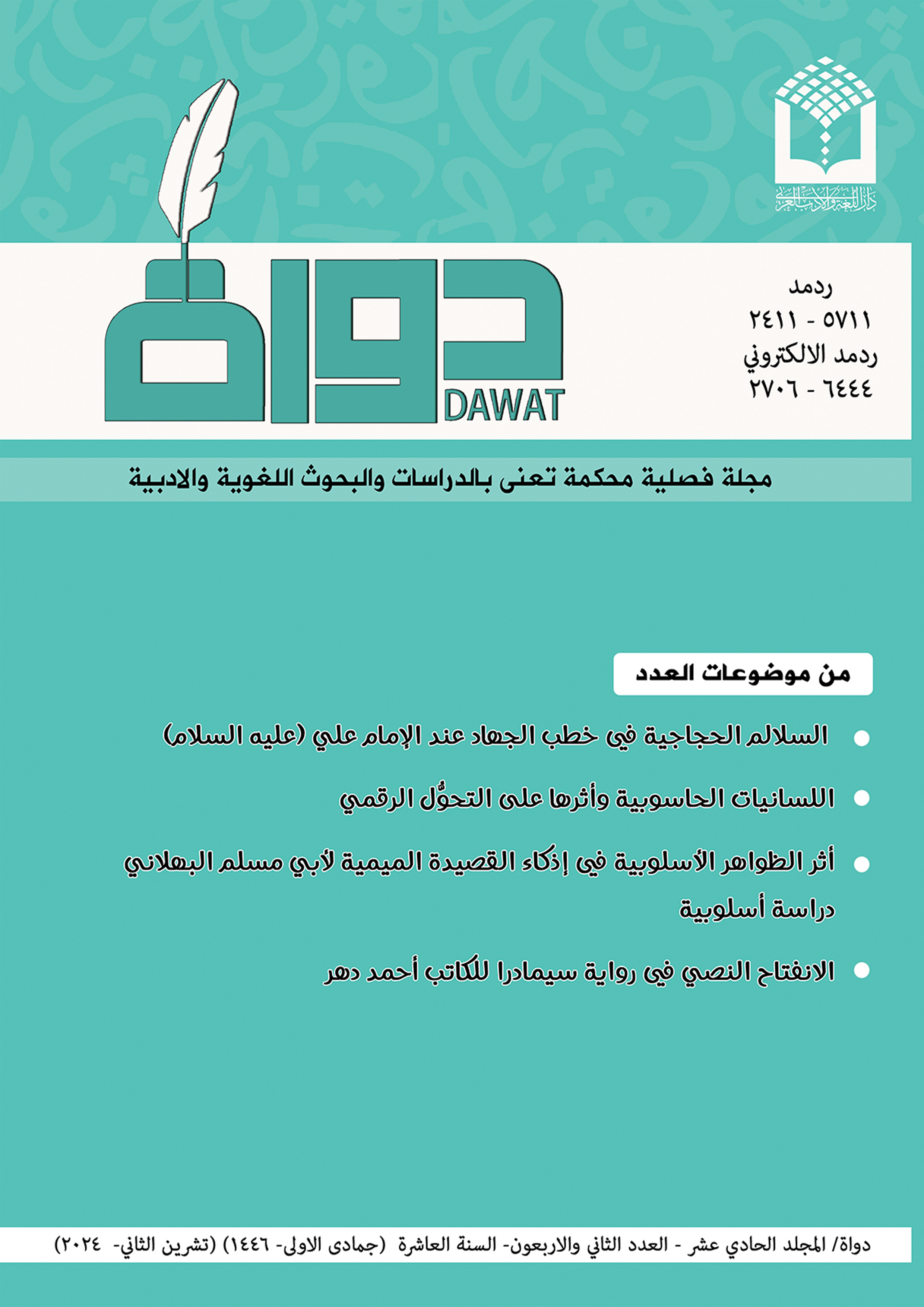Abstract
This research aims to examine the meanings of the aesthetic values of the grammatical and morphological systems in the first part of Al-Sharif Al-Radi’s Diwan, who benefits from the data of grammar and morphology as aesthetic tributaries that pour into his unique talent of expressing thoughts, so that his temperament and craftsmanship are combined in the birth of the poem.
To this end, this research is divided, after the introduction, into two parts: the first studies the aesthetics of grammatical phenomena, which in turn is subdivided into two branches: the first is concerned with what deviates from the rules agreed-upon. For example, when the subject comes in the form of connected pronoun, and when the predicate of the incomplete verb in verbal sentences precedes its noun, the deletion of the infinitive letter (أنْ), and the entry of F letter فاء on the answer located after the condition and the grammatical rank. As to the second branch, it is concerned with what falls under the rule, such as when the object of specification is defined by (the), when ‘ma’( ما), meaning what, come as a conditional for the adverb of time, when the predicate of ( لعل), meaning perhaps, is associated with the infinitive ‘if’(ان), the deletion of the construct in the genitive case, the substitution of the indefinite with the definite, and the advent of the exception preceded by a moral negation, the accusation of noun on the predicate ‘ma’ (ما) with the extra ‘ba’ب letter, the initiation of the circumstantial sentence with the ‘w’ letter (waw واو ) and the affirmative present sentence, the deletion of the adjective, and the addition of prepositions.
As for the second section, it studies the aesthetics of morphological phenomena, subdivided into two branches: the first is concerned with what deviates from the norm, such as the irregular plural, changing the genitive case (كسرة) of the verb into the objective case and changing its L‘Lam’ لامinto A ‘alf’ الف. The second branch is concerned with what falls under the rule and is distinguished by use such as shortening the extended and extending the short, making the connection, converting the hamzat of catting همزة القطع to joining one and the joining one into cutting one. Finally, and changing the accusative case into the nominative and genitive case, and the treatment of the imperfect noun in the accusative case as the nominative and genitive.
Keywords: the aesthetics of phenomena, grammatical and morphological, Al-Sharif Al-Radi.
